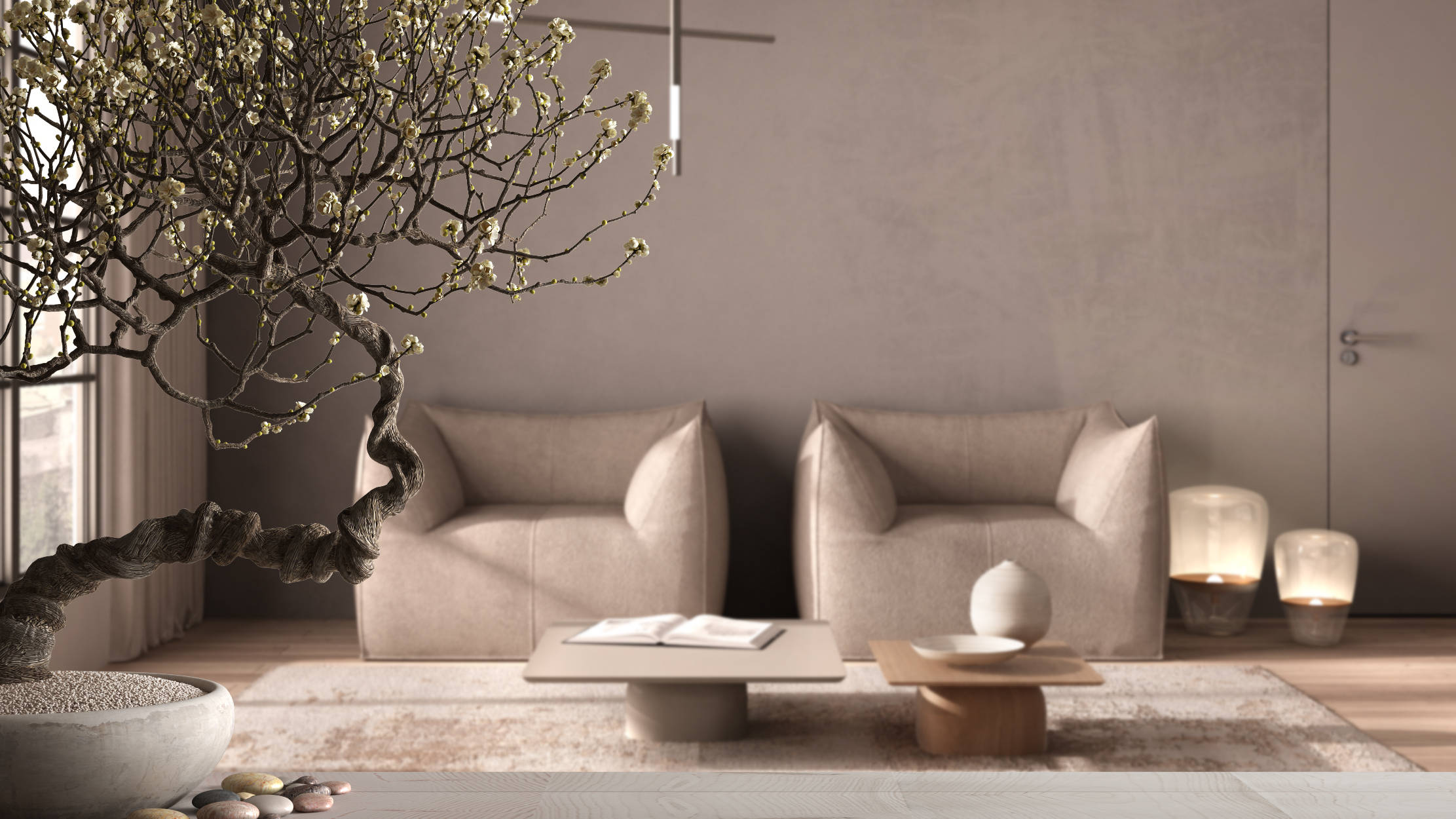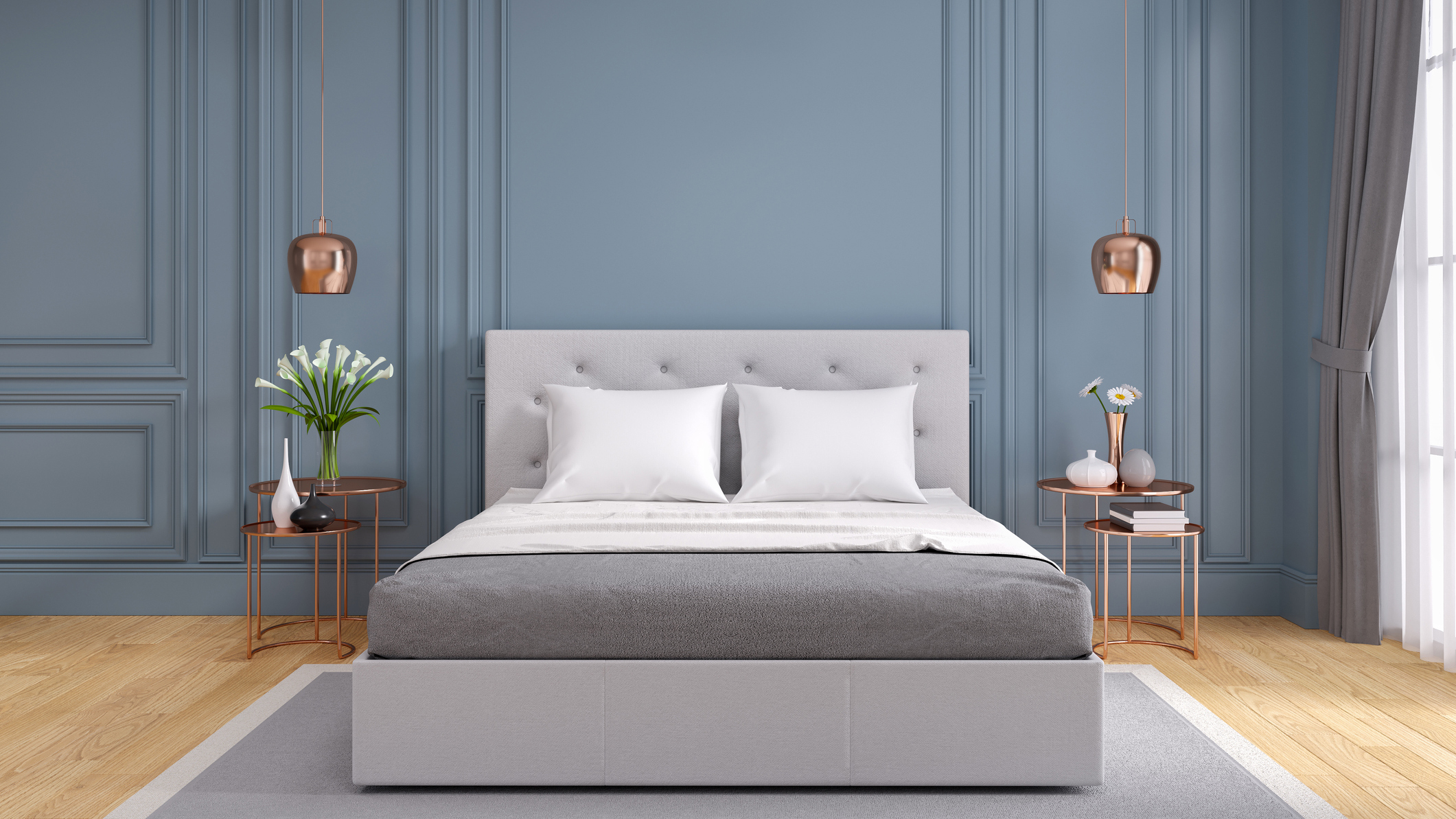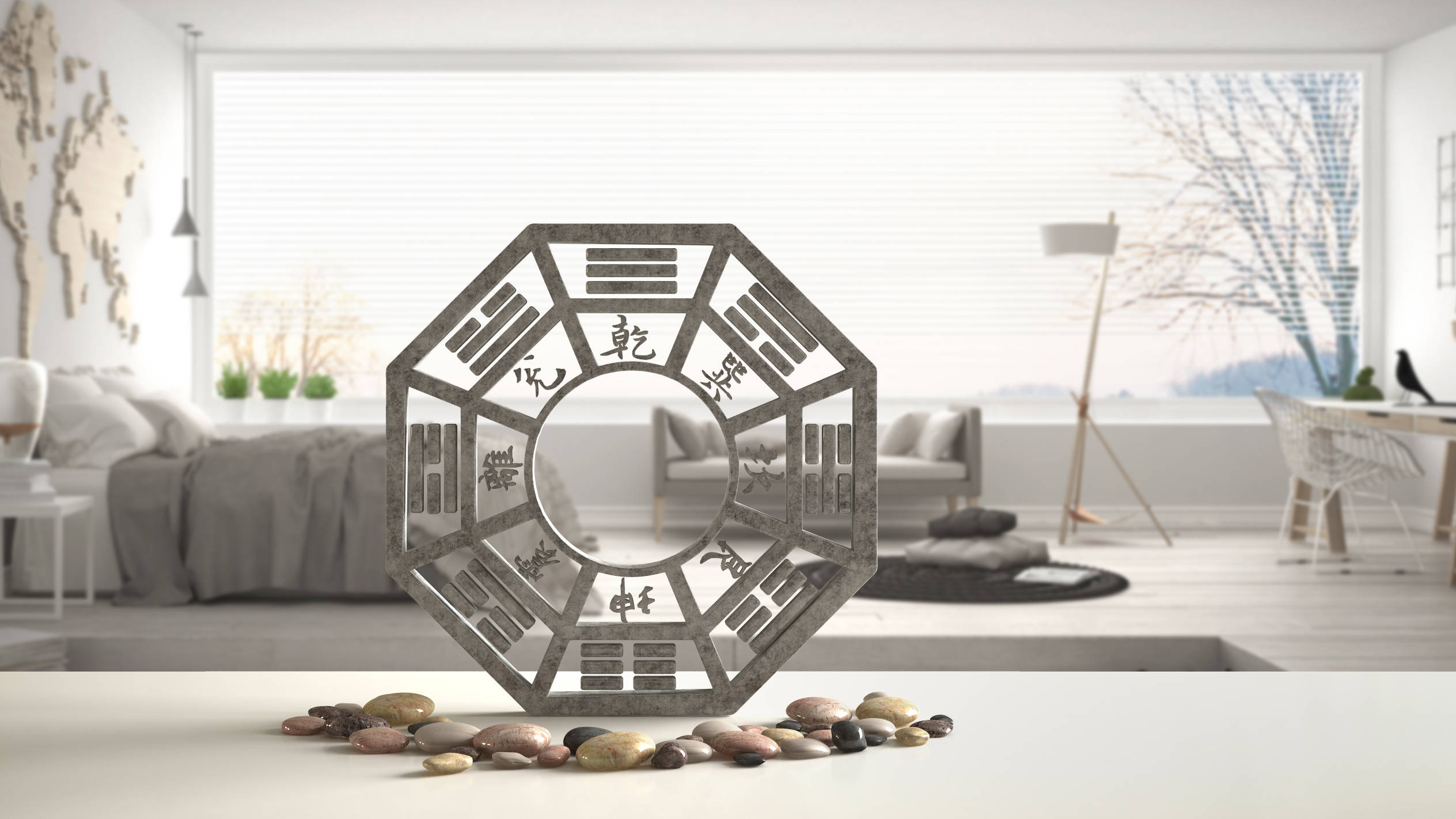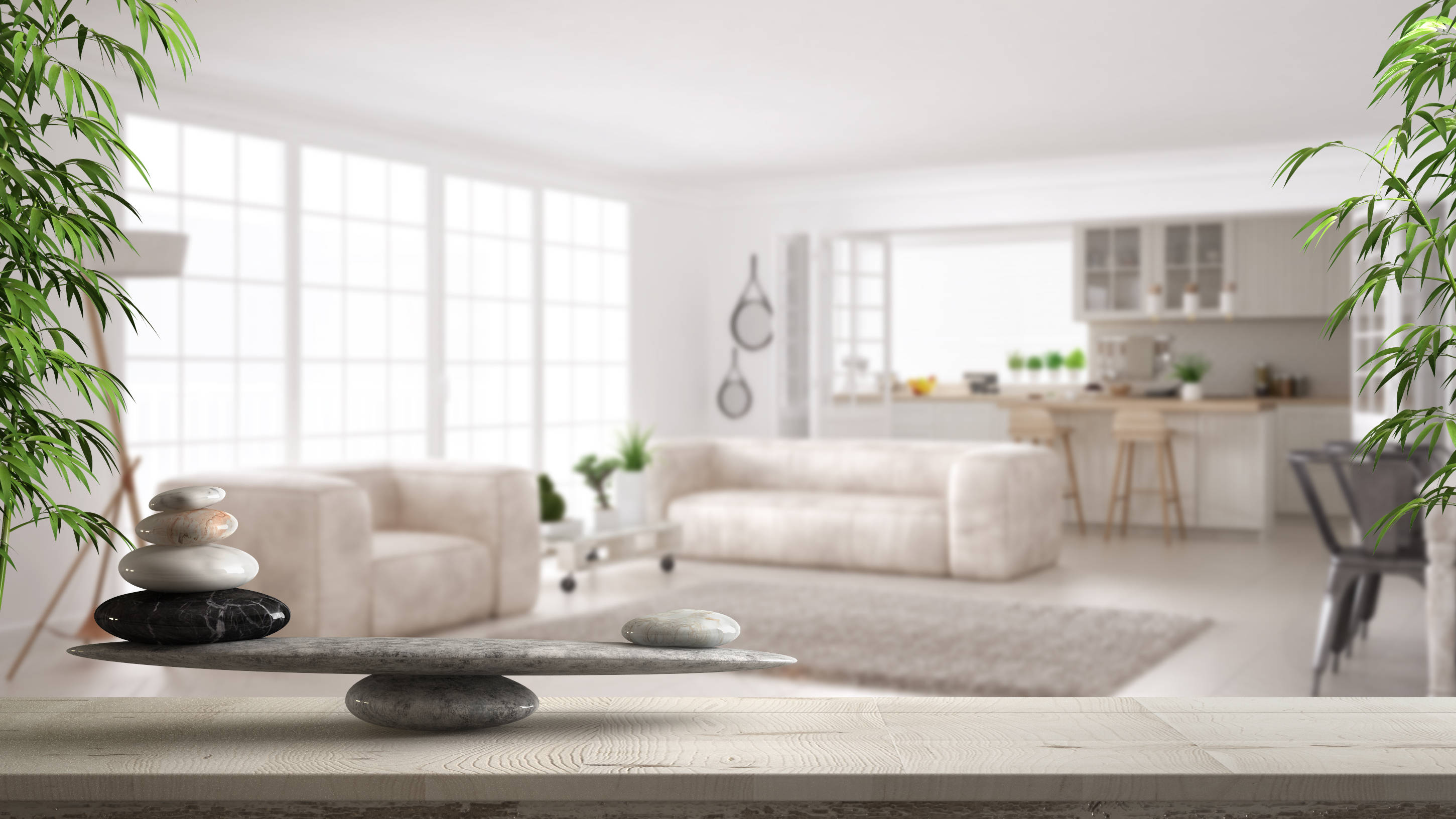I used feng shui to bring balance to my home — here's what I learned
Feng shui prompted me to bring balance to my home and mind, but how did I do it?

Feng shui feels like a term that you hear a lot when it comes to interior design, but find it hard to understand what it actually is. In its simplest and most modern form, it’s about rearranging furniture and items within your home to find equilibrium.
From its ancient beginnings, it actually goes a lot deeper than that. Feng shui is the Chinese practice of harnessing the universe’s energy to generate harmony and balance for your surroundings and yourself.
The principles of feng shui are implemented in both interior and architectural design, like feng shui in your bedroom for a better night’s sleep. It’s a practice that many follow to bring the right positive spirit into their home and like other methods that have followed it, including the KonMari method and the Swedish death cleaning trend, it’s an opportunity to realign your home, declutter, and start afresh.
Disclaimer, before I carried out this process, I really knew very little about it. In a bid to enlighten myself and my home, here’s how I incorporated feng shui and how it ultimately changed my life.
What is feng shui?

In literal translation, feng shui means wind and water, which are both fluid. It’s believed that each element controls the direction of the universe and the flow of it can be controlled by realigning furniture and, in its largest sense, entire buildings. Position your home correctly and the good energy will follow.
There’s many elements and teachings to feng shui, of which I’ll delve into below. One you may have heard about the most is harnessing the yin and yang. Yin yang refers to opposing elements that balance each other out when used together. Finding the right interaction between them in each room of your home is integral to feng shui. This means dark and light colors, soft and hard textures and surfaces, cold and hot energy.
Feng shui at its core is about finding harmony and balance. To achieve this though, there’s a lot to consider.
I tried feng shui — here’s how it changed my life

There are certain principles to follow when considering incorporating feng shui into your home. First off, consider the chi. Chi refers to the energy moving around your home. To have good chi is to create an environment where it can flow freely and gently around your space. A cluttered environment where furniture blocks walkways and parts of your home creates bad chi. A vacant room where there isn’t enough furniture creates vast amounts of empty space for which the chi can escape too fast is also bad.
So, I needed to focus first and foremost on making sure the furniture and objects I had in each room were purposeful. Incorporating only things that generate happiness. No negative attachment. Nothing broken, cluttered, or unlikeable. With that in mind, I moved onto learning more about feng shui.
The five principles
You are urged to consider the Five Principles to begin with; Fire, Earth, Water, Wood, and Metal. Each element carries its own properties, the warmth of earthen objects, the flow of water, the strength of metal. In feng shui, it was asking me to incorporate the actual material of the elements into my home to bring power into my indoor space. Like a hardwood floor in the kitchen or a wooden side table.
I didn’t opt to buy any more objects for my home during my time with the method, but instead opted to eliminate any items that didn’t hold a purpose or a property that was offering anything to the environment.
Once I’d looked in each room of my home, I realized for my own availability of time, I’d start with the smaller rooms. And, if I felt it was a positive experience, I’d move on. To work out the best way to target your home, there’s the simple feng shui tool of Bagua or Pa Kua. It’s a mapping chart divided into nine areas. You start at the front door and map out the floor plan.
Depending on how many levels in your home, you’d map out the first level, basement, second floor, etc. separately. Then you use the Pa Kua, like above, to allocate different meanings depending on where each room falls in the grid. You then fill each room with the relevant items.
I’ll be honest, I started to get a bit confused here. It was at this point I decided to use the map as just guidance. It was telling me that I needed to prioritize the chi in each room in a certain way and to put my own thoughts, feelings, and intentions into each and that’s what I focused on.
A turning point
This was a turning point. I realized that feng shui doesn’t need to be as complicated as I once thought. To achieve a happier home full of positive energy, there were some simpler steps to follow. Declutter each room around my home, starting at the front door. Remove objects that took up unnecessary space. Clean my windows to allow for natural sunlight to pour in.
I prioritized the objects that best represented me and the purpose I wanted for the room. Placing certain objects as the focal point of the room is known in feng shui as the commanding position. The bed should be centralized in the bedroom, the desk in your office in a dominating place, the objects you use to cook the most with in the kitchen in a powerful space. Focus on creating good space.
I was on a roll now. Next, I decided to focus on controlling traffic flow and for this, I had to create strong pathways for living and moving with ease. I started by removing obstacles and items that may appear as clutter or that ebb the flow of the chi around the room. This didn’t mean removing everything, but looking at the space in the way we like to live in our home and where we’d move around.
It's all about balance
Finally, once the rooms were decluttered, cleaned, and realigned as I saw fit, I focused on bringing in items that feng shui considers to bring positive energy into a room; whether it’s plants that make your home smell nicer, houseplants for beautiful blooms, or specific positive feng shui plants like money trees, lucky bamboo, and jade plants.
Finally, after all this feng shui practice, you can focus on balancing colors. I wasn’t really in the mood for painting at this point, so instead purchased a few pieces of artwork to balance out my room and bring happy energy to my space.
Bottom line

I’ve tried a few different tidying methods in my time and to me, feng shui felt like the one I’d get along with the least. I didn’t really understand it and I felt like what I’d be doing was moving my furniture around and seeing if I got good vibes from it. It changed my life because it altered my entire way of thinking.
Feng shui doesn’t have to be complicated. Your research into it can be as extensive as you like, but at its core it’s about finding balance and harmony in your home and that is very individualistic. There’s basic elements you can follow, of which I did, and at the end of it it truly transformed my home and the way I felt about it.
There’s definitely certain things I couldn’t do. In feng shui, you shouldn’t have too much clutter, but I’ve got small kids. You shouldn’t store things under your bed, but it’s just not practical when there’s no room elsewhere. To me, it’s about finding the middle ground between your lifestyle and what feng shui offers. This really changed how we then moved around the home and how we began to appreciate the space a lot more.
At the end of it all, I felt a sense of calm in a home that once resided in chaotic energy. You might also be interested in reading 5 interior design ideas that can improve your mental health.
More from Tom's Guide
Sign up to get the BEST of Tom's Guide direct to your inbox.
Get instant access to breaking news, the hottest reviews, great deals and helpful tips.
Grace is a freelance journalist working across homes, lifestyle, gaming and entertainment. You'll find her writing for Tom's Guide, TechRadar, Space.com, and other sites. If she's not rearranging her furniture, decluttering her home, or relaxing in front of the latest streaming series, she'll be typing fervently about any of her much-loved hobbies and interests. To aid her writing, she loves to head down internet rabbit holes for an unprecedented amount of time.

